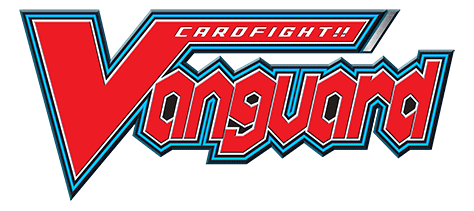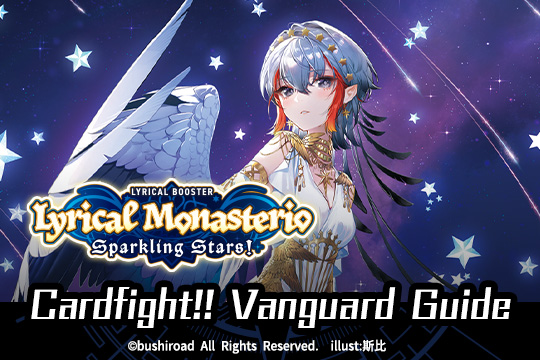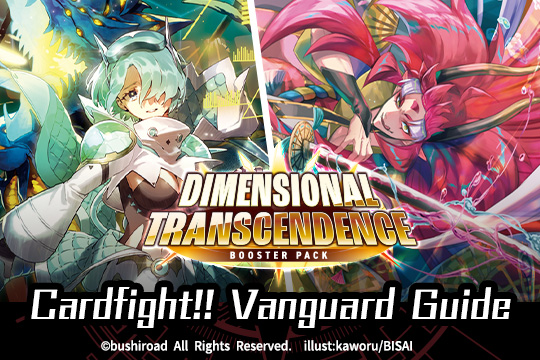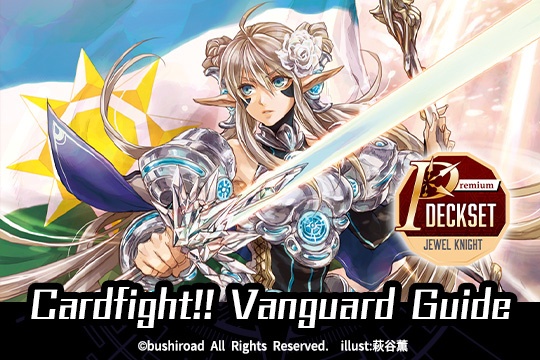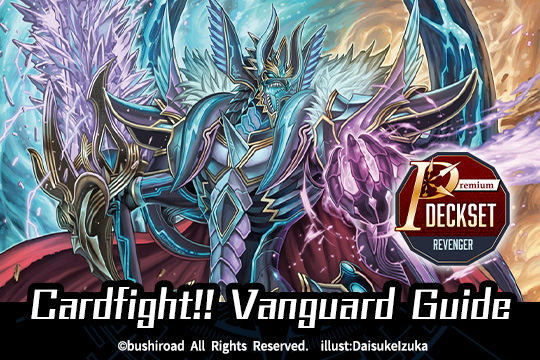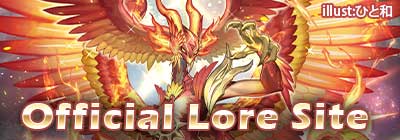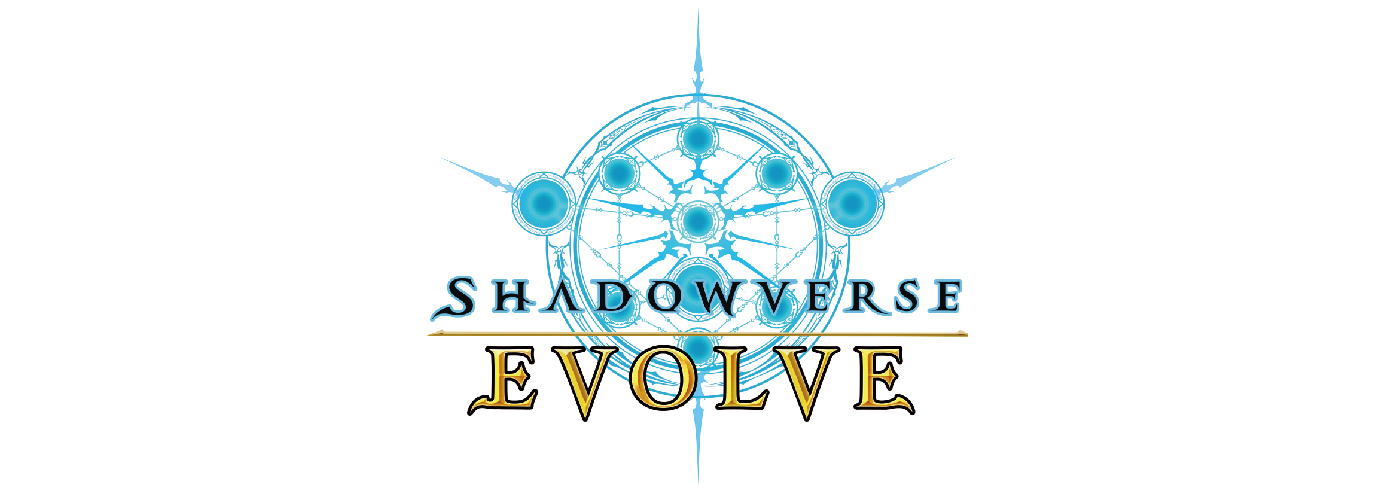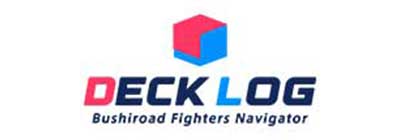
CARDFIGHT!! VANGUARD overDress is the latest iteration of the 10 year running game of Cardfight!! Vanguard. Recently, the D Special Set 01: Festival Collection 2021 was released for the Standard format, following the release of D Booster Set 01: Genesis of the Five Greats and the 5 Start Decks. Once again, thank you for your commitment and dedication to this game! We hope that you will continue to play and enjoy Vanguard, in whatever capacity possible.
Now, let’s get into the latest set! D Booster Set 02: A Brush with the Legends contains cards that support the first 10 ride lines in the Standard format. Furthermore, there are two very familiar cards that will make their debut in this set! In this article, we’ll be highlighting three important cards that each ride line will need from this booster set. We’ll also be looking at some important cards to pick up for the new ride lines!
- Encounter Cards
- Front Triggers
- Dragon Empire
- Dark States
- Keter Sanctuary
- Stoicheia
- Brandt Gate
- Conclusion
Encounter Cards
Encounter cards are a series of new cards which are introduced in this booster set. These cards have the following characteristics:
- They are units that have existed in Cray’s past, and they have been brought into the Standard format.
- These cards have a special card frame that resembles ancient stone, in reference to how the units are powerful warriors of the past.
- These cards have a Nation box and a Clan box specified. There is also a Clan icon on the bottom right of the card.
- These cards can be used in the Standard format with their respective nation, and in the Premium Standard format with their respective clan.
These cards are the perfect callback to the iconic units that have defined Vanguard for the past 10 years, so do keep an eye out for them whenever they are released!
New Ride Lines
With the second booster set, Dragonic Overlord and Phantom Blaster Dragon will be making their way into the Standard format with their very own support cast and ride line! Let’s have a look at some of the cards that function well within their decks!
Dragonic Overlord
In Planet Cray’s history, one of the most powerful beings that ever roamed the world was the fearsome Dragonic Overlord. Earning the title of “The Crimson Reaper” and “The Wind of the Apocalypse”, this unit has fought countless battles and has become enshrined in glory and honour in Cray’s history. Over time, the inhabitants of Cray have forgotten the might of Dragonic Overlord. But with this Booster Set, we revisit the glory the almighty general once had as a special Encounter!
Dragonic Overlord’s deck is one of the simpler decks to play, and its playstyle is quite straightforward. However, it is not a deck to be underestimated. With its sheer power and offensive capabilities, this deck can crush opponents who forget the strength of this crimson dragon.
Dragonic Overlord and its supporting cast can be found in this booster set! Nonetheless, there are some key cards that can be grabbed from D Booster Set 01 as well!
Sample Decklist:
| Card Name | Grade | Quantity |
|---|---|---|
| Dragonic Overlord | 3 | 4 (1 in ride deck) |
| Dragon Knight, Nehalem | 2 | 4 (1 in ride deck) |
| Embodiment of Armor, Bahr | 1 | 3 (1 in ride deck) |
| Lizard Runner, Undeux | 0 | 1 (1 in ride deck) |
| Penetrate Dragon, Tribash | 3 | 2 |
| Berserk Dragon | 2 | 4 |
| Burn Bright, Pure Prayers (Blitz Order) | 2 | 4 |
| Stealth Dragon, Tensha Stead | 1 | 4 |
| Dragon Monk, Gojo | 1 | 4 |
| Twin Buckler Dragon (Perfect Guard) | 1 | 4 |
| Blaze Maiden, Zonne (Critical) | 0 | 4 |
| Conduct Spark Dragon (Critical) | 0 | 3 |
| Blaze Maiden, Parama (Front) | 0 | 4 |
| Blaze Maiden, Rona (Heal) | 0 | 4 |
| Dragon Deity King of Resurgence, Dragveda (Over Trigger) | 0 | 1 |
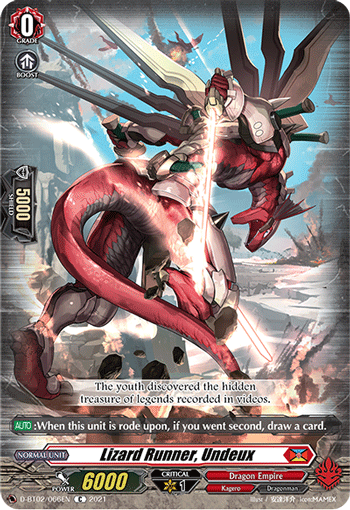
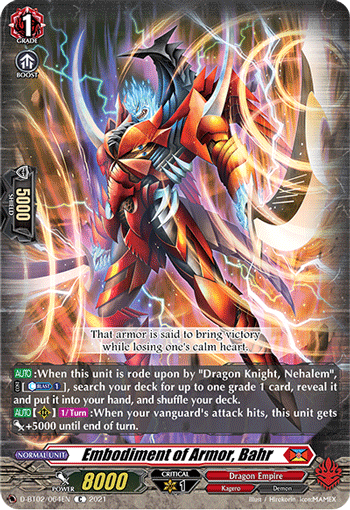
Bahr’s first ability is extremely powerful because it allows the players to grab any G1 card from their deck for a very small cost. The G1 card that was added to hand could serve any purpose as the game progresses. Need another defensive card? Grab a Perfect Guard! Need some offensive pressure? Grab a Tensha Stead or a Gojo! Bahr’s versatility and utility can even cause the opponent to choose not to attack during their turn to prevent its ability from activating.
Bahr’s second ability also allows it to become an attacker or booster to further pressure the opponent to guard with more cards. Players could definitely run more copies of Bahr in the deck to utilise this, but they also need to take note of the other impactful cards that need to be run in the deck as well.
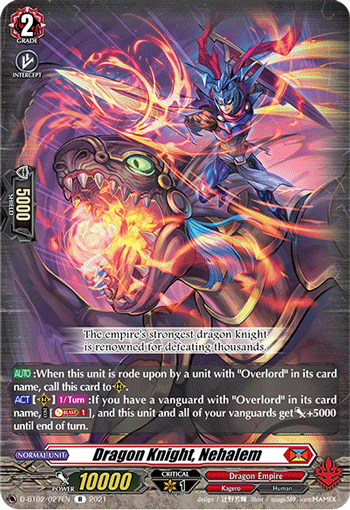
When Nehalem is rode upon by a unit with ‘Overlord’ in its card name, the player can call this card to a rear-guard circle. This ability allows Nehalem to still have an impact on the battlefield as a rear-guard for essentially no cost! Furthermore, it ties into Nehalem’s second ability which is extremely potent.
Nehalem’s second ability allows the player to strengthen their ‘Overlord’ vanguard and Nehalem as well! If the player has a vanguard with ‘Overlord’ in its card name, the player may Soul-Blast 1 to give Nehalem and all of the player’s vanguards +5000 power until the end of the turn. This allows both Nehalem and Dragonic Overlord to hit for even higher numbers, forcing the opponent to drop more Shield to block their attacks. If Nehalem is boosted by Bahr, this attack can easily go up to 28 000 power! As such, Nehalem could be considered to be run in the main deck as well!
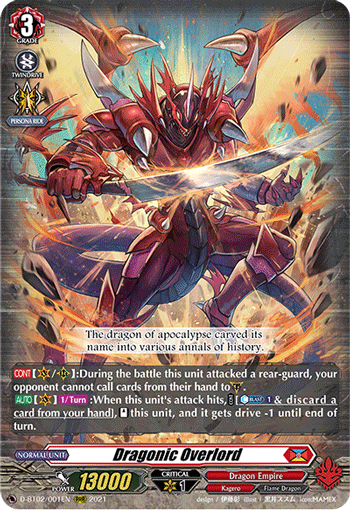
Dragonic Overlord’s first ability is something not to be underestimated. During the battle that it attacked a rear-guard, the opponent cannot call cards from their hand to the guardian circle. Essentially, any rear-guard that Dragonic Overlord attacks will definitely be retired. Rear-guards like Fosado and Trickstar will be easy targets for Dragonic Overlord to cut down. This ability ties into Dragonic Overlord’s potent second ability.
When Dragonic Overlord’s attack hits, the player may Counter-Blast 1 and discard a card from their hand to stand it and give it drive -1 until the end of the turn. This ability allows Dragonic Overlord to drive check three times during the player’s turn, which could allow it to gain even more power through the triggers revealed.
What makes this ability even better is the fact that it will almost always be guaranteed to activate if the opponent has any front row rear-guards. This is because Overlord’s first ability will prevent the opponent from blocking its attack, allowing it to hit and restand without hindrance.
Must haves:
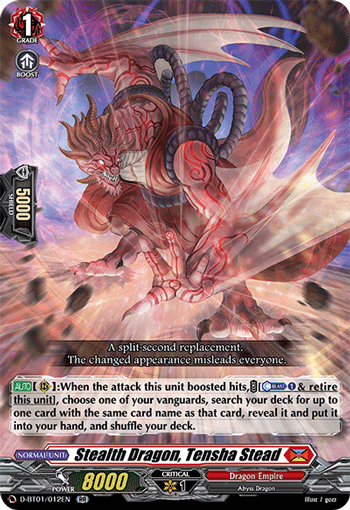
This card becomes even more potent with Dragonic Overlord. Because of Dragonic Overlord’s first ability that allows its attack to hit any rear-guard, if Tensha Stead is boosting Dragonic Overlord’s first attack, its ability will definitely activate. Dragonic Overlord players will be guaranteed a Persona Ride to use on the following turn!

This ability allows the Overlord players to better manage their resources and opens up more opportunities for them to use more card abilities. Gojo definitely is a 4-of in the deck, and players should be able to pick up copies of this card given its Common rarity.
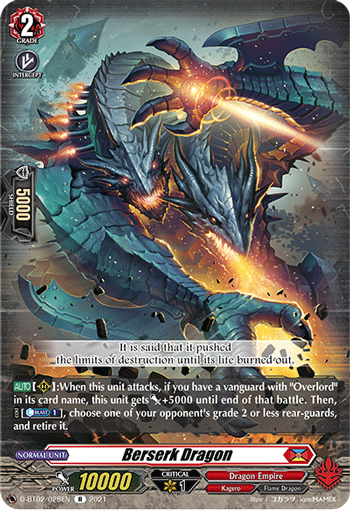
Berserk Dragon’s power buff is extremely easy to achieve the moment the player rides up to Grade 3, given that a vanguard with Overlord will always be present on the field then. Furthermore, the field control tool can be used to remove the opponent’s key grade 2 rear-guards, which could have been used to Intercept.
Berserk Dragon should remain as a 4-of in the deck for now due to its power gains and board control.
Options:
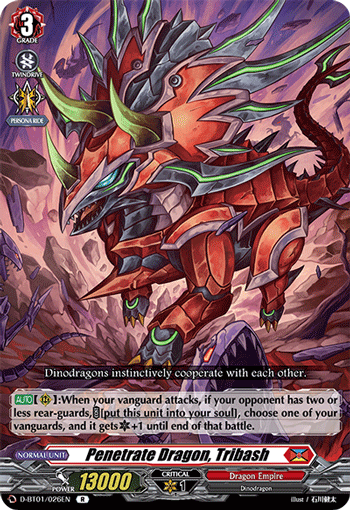
This ability will be especially great when the opponent has few rear-guards on the field, perhaps due to Overlord’s first attack and Berserk Dragon’s field control. With potential Power from triggers revealed from Dragonic Overlord’s drive checks and Nehalem’s power buff, the Critical that Tribash can confer to the vanguard can be extremely threatening. Tribash also helps with soul costs of Dragonic Overlord’s support cards. Tribash provides great aggression and utility to the deck that should definitely be considered by players!
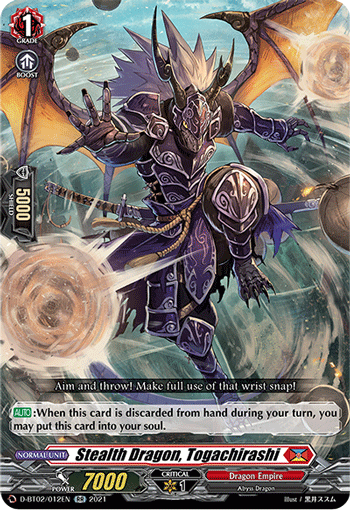
Togachirashi helps to replenish soul for Dragonic Overlord’s support cards, These cards include Nehalem and Enten, and they can help to strengthen Dragonic Ovelord’s attacks. Furthermore, this card can be discarded when riding from the Ride Deck or when Dragonic Overlord uses its re-Standing ability, allowing the player to gain resources even after losing hand advantage. Of course, running Togachirashi would take up space in the deck to run more offensive options in the deck, but it helps to ensure that Dragonic Overlord players have sufficient resources to perform powerful attacks consistently.
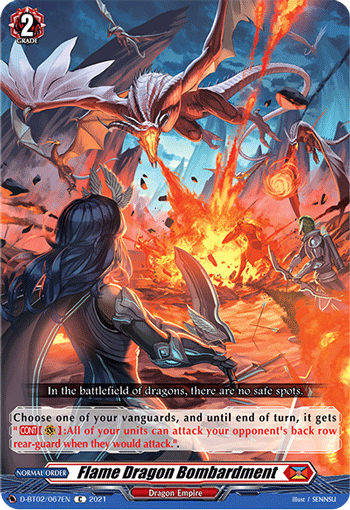
This card allows all of the players’ rear-guards to deal with key back-row rearguards that could be untouchable, such as Trickstar. Combined with Dragonic Overlord’s first ability, this card allows the player to still activate Dragonic Overlord’s re-Stand if the opponent did not call any rear-guards to the front row but instead had rear-guards in the back row.
This card doesn’t do much defensively, though, so players could consider.

Enten can be used to strengthen Dragonic Overlord’s second attack; this ability is quite reliable when it boosts Dragonic Overlord’s first attack into a rear-guard. Enten could also be used to buff up other rear-guards like Nehalem and Berserk Dragon if Dragonic Overlord’s power is sufficient.
Enten’s ability is reliant on Soul-Blast in order to activate, and soul can become a difficult resource to replenish if players use Nehalem’s ability consistently to strengthen the vanguard. As such, if Enten is played, players should also consider running Togachirashi in order to help with soul costs.
Things to take note of:
1. Opponent’s rear-guards
In order for Dragonic Overlord players to fully maximise the deck’s potential, they will need to ensure that Dragonic Overlord’s ability is able to activate consistently. This means that they should always attack into the opponent’s rear-guards with Dragonic Overlord as much as possible. Of course, there will be certain instances that the opponent denies Dragonic Overlord any rear-guards to attack into, so cards like Flame Dragon Bombardment may serve useful (of course, this applies if they leave any back-row rearguards on the field).
2. Persona Ride
Players should definitely try to ensure that they are able to Persona Ride consistently with Dragonic Overlord. The 10 000 power boost is absolutely beneficial for Dragonic Overlord to pose a dangerous foe to deal with. As such, cards that can draw and search the deck for Persona Ride copies will become crucial (such as Stealth Dragon, Tensha Stead). Cards that can take advantage of this high power to apply more pressure onto the opponent will also be very welcome (an example of this is Penetrate Dragon, Tribash)!
Phantom Blaster Dragon
The darkness of Shadow Paladin has been long forgotten in Planet Cray’s storied history. However, the dormant evil rises once more as Phantom Blaster Dragon and his Shadow Paladins make their malice known to the rest of the world! Planet Cray will taste again the power of the blades of “Shadow Erosion” that the corrupted dragon wields in battle.
Phantom Blaster Dragon focuses on retiring its own rear-guards to remove some of the opponent’s rear-guards and become stronger. Its support cards help in increasing the number of units on the field that Phantom Blaster Dragon can retire to strengthen itself. Phantom Blaster Dragon is not to be underestimated by anyone as it boasts extreme offensive pressure that can crush opponents when played correctly.
Phantom Blaster Dragon and its support cast will be readily available in this set! There are also some support cards from DBT01 that can strengthen the deck further!
Sample Decklist:
| Card Name | Grade | Quantity |
|---|---|---|
| Phantom Blaster Dragon | 3 | 4 (1 in ride deck) |
| Blaster Dark | 2 | 4 (1 in ride deck) |
| Blaster Javelin | 1 | 3 (1 in ride deck) |
| Fullbau | 0 | 1 (1 in ride deck) |
| Knight of War Damage, Fosado | 3 | 4 |
| Knight of Heavenly Destruction, Kapald | 2 | 4 |
| Darkness Maiden, Macha | 2 | 4 |
| Black Sage, Charon | 1 | 4 |
| Witch of Pandering, Brunner | 1 | 4 |
| Aegismare Dragon (Perfect Guard) | 1 | 4 |
| Knight of Heavenly Hammer, Gurgant (Critical) | 0 | 4 |
| Healer of Heavenly Staff, Arshes (Heal) | 0 | 4 |
| White Fang Witch, Disma (Critical) | 0 | 4 |
| Exalting Knight, Eafred (Draw) | 0 | 3 |
| Light Dragon Deity of Honors, Amartinoa (Over Trigger) | 0 | 1 |
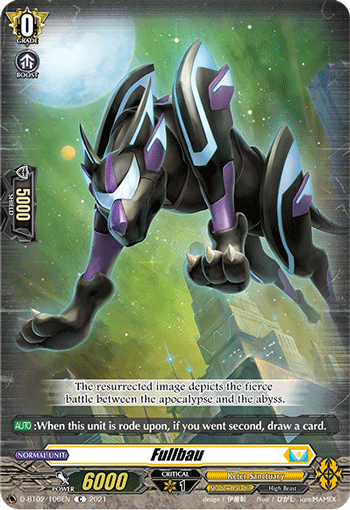
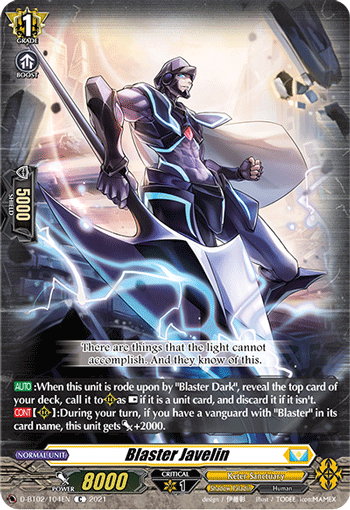
When it is rode upon by Blaster Dark, the player may reveal the top card of the deck. If it is a unit card, the player calls it to a rear-guard circle as Rest. If not, the player must discard it.
This ability chains directly into Blaster Dark’s ability, which requires a rear-guard on the field in order to activate. Other than that, Blaster Javelin’s ability can be used to call down units that have impactful on-place abilities, such as Macha and Charon.
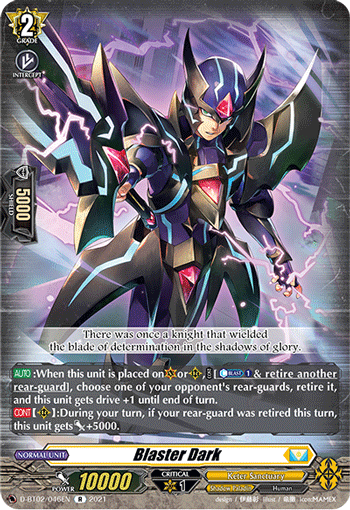
Not only does Blaster Dark provide field control for the deck, it also allows the player to drive check even more on their second turn, which allows them to gain more hand and potentially reveal triggers. Given that Blaster Javelin’s ability will activate to call an additional rear-guard for free, this ability will essentially result in a net gain in card advantage for the Phantom Blaster Dragon players.
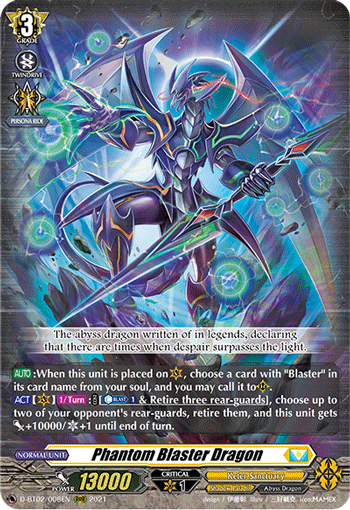
When Phantom Blaster Dragon is placed on the vanguard circle, the player may call a card with ‘Blaster’ in its card name from their soul to a rear-guard circle. This ability allows the Phantom Blaster Dragon player to gain card advantage easily, as they are able to call out an array of great units to support the offense. Blaster Dark, Blaster Javelin, and even Phantom Blaster Dragon can all be called out by this ability. It’s a great way to create a field of attackers; but more importantly, it can also provide resources for Phantom Blaster Dragon’s second ability.
Phantom Blaster Dragon’s second ability allows the player to empower Phantom Blaster Dragon for a formidable attack. By paying 1 Counter-Blast and retiring three of the player’s rear-guards, the player may choose two of the opponent’s rear-guards and retire them, while also giving Phantom Blaster Dragon +10 000 power and a Critical! This ability is a callback to the iconic playstyle of Phantom Blaster Dragon, and it is still a relevant ability in the Standard format. Of course, players will need to be mindful of when to use this ability as they will eventually run out of rear-guards to sacrifice for its ability.
Must haves:

Without Brunner, Phantom Blaster Dragon players will always have to retire three of their own rear-guards in order to activate its second ability. This can be detrimental in the long game as they will eventually run out of resources to utilise Phantom Blaster Dragon’s power. As such, Brunner is an easy 4-of in the deck.
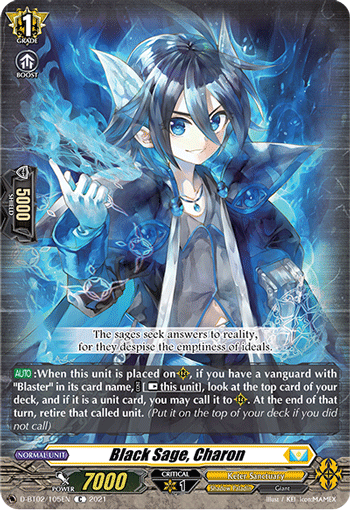
This ability aids the deck by calling an additional rear-guard that can be retired for Phantom Blaster Dragon’s ability. Furthermore, if the player looks at the top card of the deck and finds a trigger unit, they can choose to leave it on the top of the deck for the opponent to deal with when they begin their attack. While the versatility of Charon isn’t the main draw of the card, it is still an integral part in the deck as it helps to call down weak rear-guards that Phantom Blaster Dragon can sacrifice to gain power.

Macha is extremely helpful as it becomes a strong attacker when boosted with a grade 1, being able to hit at least 23 000 power on attack. What’s more important is the fact that Macha can retire another rear-guard to call a grade 1 or less rear-guard from the deck. This ability can potentially call down key cards like Charon (which helps to call more rear-guards for Phantom Blaster Dragon’s second ability) or Brunner (which aids in the three rear-guard cost of Phantom Blaster Dragon’s second ability). As such, Macha can create even more advantage even though the card removes one of the player’s own rear-guards for its cost. It’s also possible for Macha to retire cards that have effects when they are retired, like Virulence Dragon (which gives all units with ‘Blaster’ in their card names +5000 power when it is retired for 1 Counter-Blast and 1 Soul-Blast).
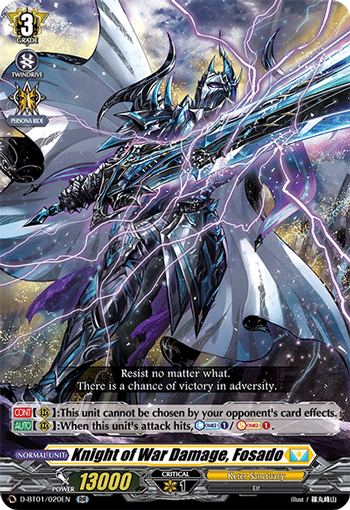
To be more specific to Phantom Blaster Dragon, Fosado provides much needed resources for units like Phantom Blaster Dragon, Virulence Dragon and Macha to use. It also remains as a great attacker for players to use due to the guard pressure it warrants. Remaining as one of the universally run cards in all Keter Sanctuary decks, Fosado must definitely be played in the Phantom Blaster Dragon deck.
Options:
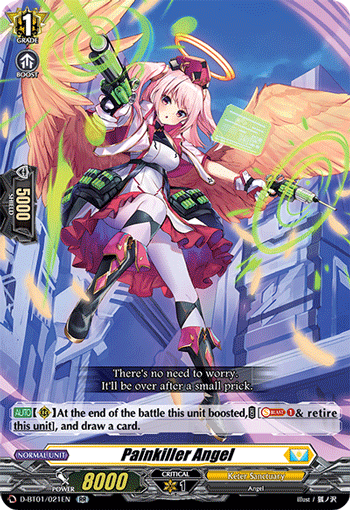
The card draw that Painkiller Angel gives helps to cycle the deck further to find more key pieces and thin the deck for potentially more triggers. Furthermore, it utilises soul, so it will usually not interfere with the general gameplan of Phantom Blaster Dragon, which primarily uses Counter-Blast. Thus, players should definitely think about running this card in their builds to increase the consistency of getting to their key pieces and maximise resource usage.

This card’s ability can be used readily whenever Phantom Blaster Dragon, Macha, and Blaster Dark activate their abilities, and it can be used to strengthen all units with ‘Blaster’ in their card name. Of course, this cost for this ability may be a bit steep, so players should definitely play this card in moderation.
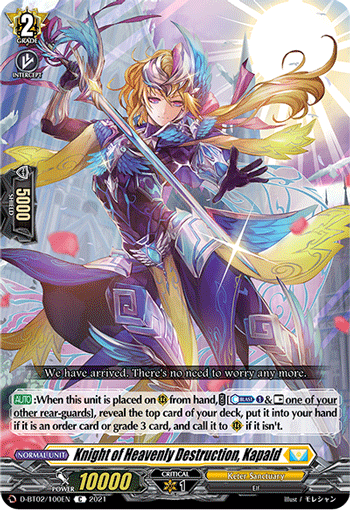
This ability further assists Phantom Blaster Dragon by calling down rear-guards that Phantom Blaster Dragon can retire for its second ability. It could potentially also add more key pieces to the player’s hand, like an additional Persona Ride. Of course, other impactful cards like Fosado and Blaster Dark need to be run alongside this card to maximise its potential.
Things to take note of:
1. Resources
While Phantom Blaster Dragon doesn’t use up resources like Counter-Blast and soul quickly, it can run out of rear-guards to retire for its effects. Players will need to use this resource wisely to ensure that they do not lose out on attackers in the long run. That’s why cards like Brunner are extremely important in the deck, as it helps to mitigate the cost of retiring one’s own rear-guards.
Of course, should Phantom Blaster Dragon players run out of soul or Counter-Blast, they could definitely use Fosado to replenish these resources! Phantom Blaster Dragon is a high-skilled deck that requires players to manage their resources well, and if done correctly, it will lead to better gameplay and performance on the battlefield!
2. Persona Ride
Persona Ride is extremely important for Phantom Blaster Dragon as well, in order to beef up attackers and increase the pressure on the opponent. Many Phantom Blaster Dragon players have chosen to run Draw triggers to filter the deck quickly for their key pieces!
Front Triggers
On top of the new ride lines, there are also new Front Triggers that are being released in this new booster set!
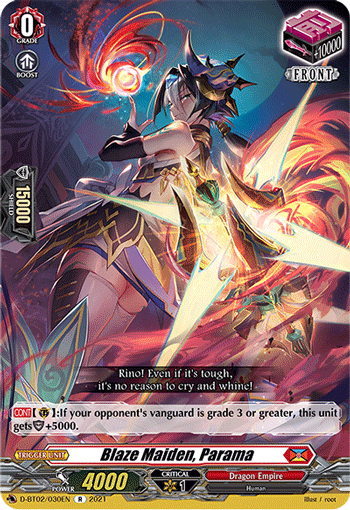
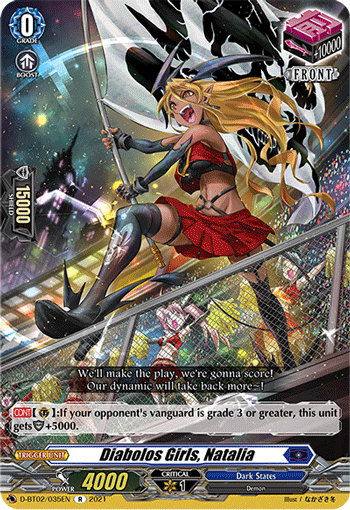
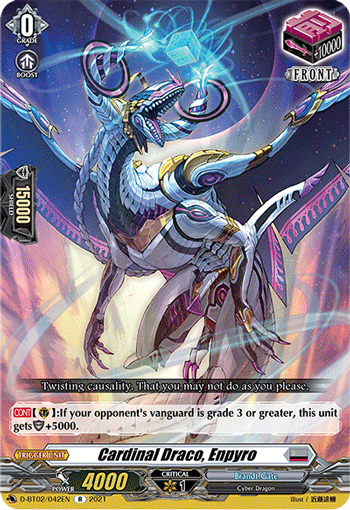
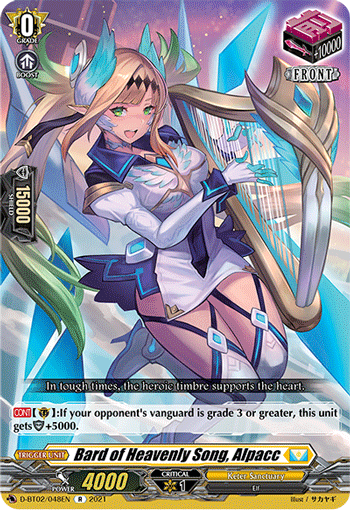
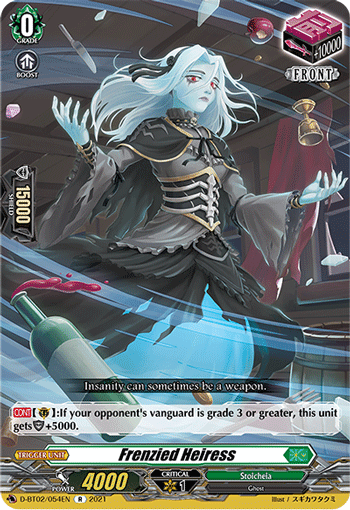
(From left to right) Blaze Maiden, Parama, Diabolos Girls, Natalia, Cardinal Draco, Enpyro, Bard of Heavenly Song, Alpacc, and Frenzied Heiress
When these front triggers are on the guardian circle, if the opponent’s vanguard is grade 3 or greater, these units gain +5000 Shield. These cards add a level of defense that many ride lines in the Standard format may need greatly, and as such players should definitely consider running these Fronts to shore up their defenses!

Support for Chakrabarthi Divine Dragon, Nirvana
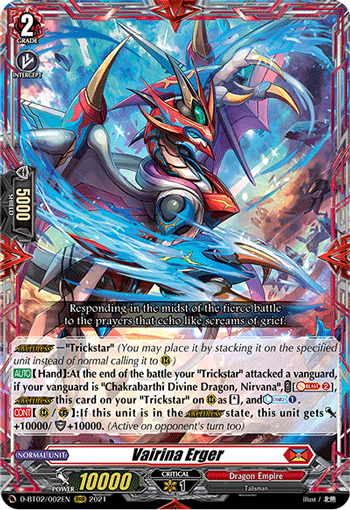
This unit enables many things that elevate the Nirvana ride line to the next level. Firstly, Erger gives Nirvana decks the ability to attack more than three times consistently, given that Valiente could only restand if its attack hit. This creates a new playstyle of Nirvana that can focus on decimating the opponent with multi-attacks.
Secondly, Erger helps to reduce the problem of Nirvana not having enough Counter-Blast by giving the deck the ability to Counter-Charge. This helps Nirvana players to have more resources to activate some of their crucial abilities to create an offense, such as Nirvana’s front row buff or Vairina Arcs’ card draw.
Finally, Erger’s power and Shield buff in overDress state helps to round out the card with more utility. Erger will be able to hit for high numbers during the player’s turn, but also serve as a great defender during the opponent’s turn. Furthermore, since Erger’s power buff is continuous during the opponent’s turn, the opponent may find it difficult to remove this key card from the field without using field control tools. The power and potential of Vairina Erger should definitely convince many Nirvana players to run this card as a 4-of in their Nirvana decks.
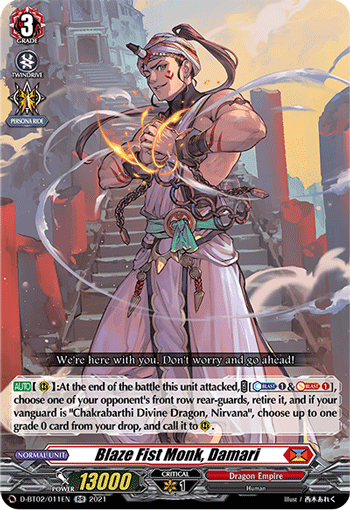
Not only is this card able to provide a reliable field control tool for Nirvana, it also helps to facilitate the multi-attack offense that Nirvana has access to due to Vairina Erger. Nirvana players can attack with Damari first, then use its ability to call out a Trickstar. After attacking with Trickstar, they could use Erger’s ability to overDress onto that Trickstar and attack with Erger. With Nirvana and another rear-guard attacking, Nirvana players will be able to attack the opponent at least 5 times.
Given Damari’s amazing offensive potential, players should definitely consider using it!

Togachirashi has a very simple but helpful ability: when this card is discarded, the player may put this card into soul. Togachirashi will be able to handle the soul requirements of many cards in the Nirvana deck, like Vairina, Erger, and Damari. Nirvana players will not have to worry as much about shortage of resources given that Togachirashi and Erger help to replenish these resources consistently.
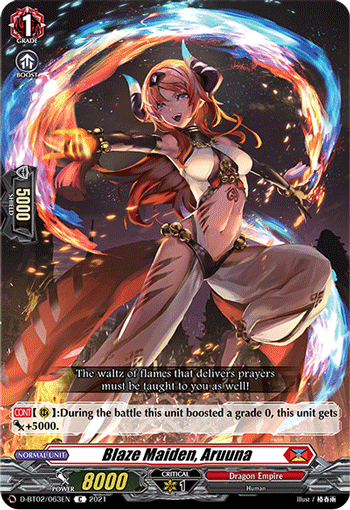
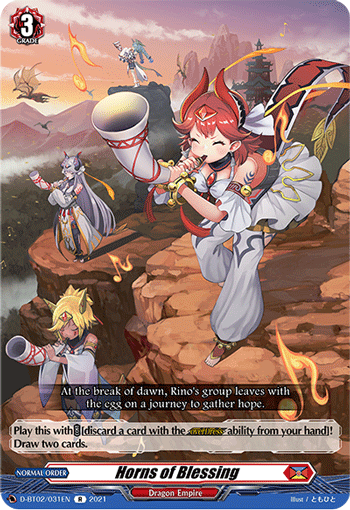
This effect allows the player to cycle through their deck faster to get to their key pieces, like Erger and Valiente. Usually, players will discard the Vairina that was added to their hand by Blaze Maiden, Reiyu’s ability to pay the cost for Horns of Blessing. This allows them to effectively add cards to hand, while also putting the Vairina to good use, as many players will find it difficult to call it down as a rear-guard given that there are more impactful attackers. Of course, players should run this in lower quantities so that supporting cards can be run in the deck.
Support for Heavy Artillery of Dust Storm, Eugene

The player can either give Iduriss a powerful +10 000 power buff, or put Iduriss into soul and retire one of the opponent’s grade 2 or greater rear-guards. This card is able to become a powerful attacker and booster when the player uses the first clause of its ability. Given that the ability can be used more than once per turn, Eugene players could use their Counter-Blast to strengthen Iduriss multiple times.
If not, Iduriss’ second ability can be used to get rid of key rear-guards on the opponent’s battlefield, while also replenishing soul and clearing the player’s board to allow Eugene to use its second skill to call out more rear-guards. Iduriss is extremely important for Eugene players, and it should definitely have an immediate impact on the battlefield!
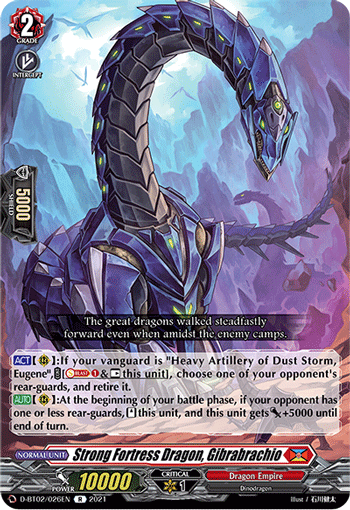
Gibrabrachio’s second ability is also very powerful. At the beginning of the player’s battle phase, if the opponent has one or less rear-guards, the Eugene player can stand Gibrabrachio, and it will gain +5000 power. This second ability allows Gibrabrachio to be another powerful attacker for Eugene, even after it has been Rest by its own ability or by Eugene’s first ability. Even if the opponent chooses not to call any rear-guards for Eugene to retire, the Eugene player can still Rest Gibrabrachio and another unit to give Eugene +10 000 power, and then re-Stand Gibrabrachio during the battle phase to attack.
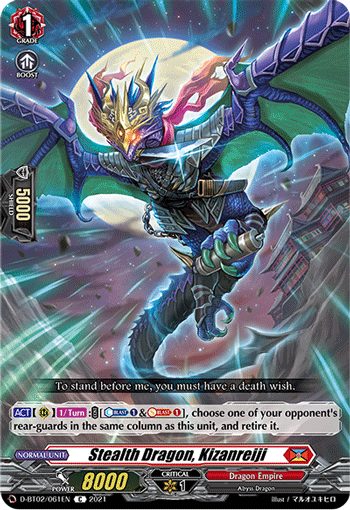
While Kizanreiji’s ability is quite simple, it is very effective as a field control option as it will remain as a threat on the board as long as the opponent chooses not to remove it. Kizanreiji can be called to a back-row rear-guard circle, preventing most decks from interacting with it. Then, it can easily remove any rear-guards that the opponent chooses to call in the same column as it. Furthermore, it still can serve as a booster for other rear-guards like Gibrabrachio and Oshikuni. Eugene players will also have more than enough resources for Kizanreiji’s ability, as they do not use Counter-Blast that often and have abundant soul.
Overall, Kizanreiji is a reliable tool for Eugene players to utilise. Players should definitely consider picking it up as a more effective field control option compared to some of the previous options in the deck, such as Dragritter, Dabbaax, Dragritter, Alwalith etc.

Support for Diabolos, “Violence” Bruce

This ability allows Bruce players to elevate their gameplay to even greater heights! Lenard can be used to fill up the board with boosting units that allow attacking columns to hit for even higher numbers; it can also be used in conjunction with cards that put other units into the soul, like Marjorie or Protobulb Dragon, to call out units to an empty rear-guard column to have an additional attack. It is very possible for Bruce players using Lenard to reach 6 attacks during Final Rush turns consistently.
Furthermore, with this card’s first ability, it can attack even more of the opponent’s units, especially their key rear-guards. Opponents may be more pressured to guard the attacks for their rear-guards, out of fear that Lenard’s second ability activates. With the reduced Shield in hand, opponents may find it more difficult to guard attacks coming from other attackers like Bruce, Marjorie and Eden. With such power, Bruce players will be hard-pressed not to play Lenard as a 4-of in their deck.
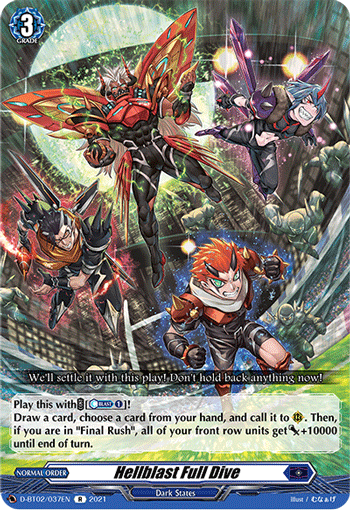
Hellblast Full Dive can serve as a pseudo-Persona Ride card, as it cycles through the deck and powers up the front row. It can also be used to further strengthen attacking columns, even when Persona Ride is active. Marjorie will be attacking the opponent for at least 43 000 power, Lenard and Eden will be attacking the opponent for at least 35 000 power (without Boost), and Bruce will be able to single handedly attack for 33 000 power. Adding on to the fact that Bruce can restand the front row rear-guards, opponents are in for a world of hurt, as they have to deal with attacking columns of 30 000 to 40 000 power 5 times when Persona Ride is active and Hellblast Full Dive is played.
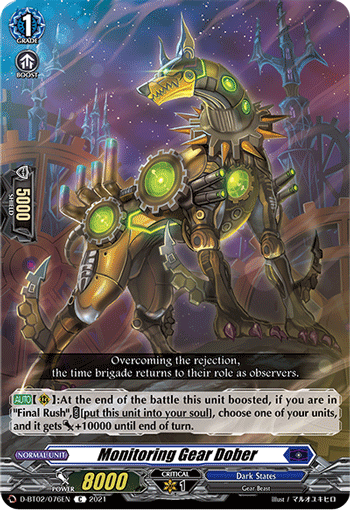
Dober can be used to power up attacking rear-guards, especially units such as Lenard, Marjorie and Eden. Furthermore, because this card is removed from the field after it boosted, it frees up a rear-guard circle on the field that Lenard could use to call another rear-guard when its attack hits. Do note that if Monitoring Gear Dober is used to boost Lenard, and Lenard’s attack hits, Lenard’s ability will activate first before Dober’s ability does as Lenard’s ability triggers “on-hit”, but Dober’s ability triggers at the end of battle.
Using this card will not be very easy as Bruce players will need to plan their attacks well to ensure that no card is wasted, but it will definitely put them at a huge advantage during Final Rush and Persona Ride turns.
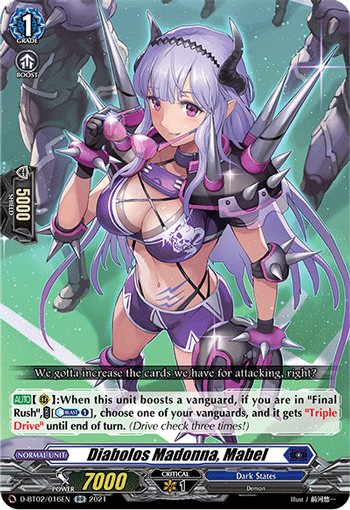
This ability helps Bruce players to regain their hand, after being attacked heavily by opponents during the early game. The Triple Drive also increases the player’s chances of revealing triggers during their drive check to further increase their offensive power!
Players should definitely use this card in moderation, though, especially with other cards that thin the deck quickly, like Lenard and Marjorie. Bruce players definitely don’t want to deck out because of this! Furthermore, Counter-Blast may be a scarce resource in the deck, so players should definitely use Mabel’s ability sparingly!
Support for Master of Gravity, Baromagnes

Furthermore, Crimson Igspeller also has an ability that activates when the card is in soul. The player can pay 1 Counter-Blast and put this card into the drop to Soul-Charge 1 and give the vanguard +10 000 power. There is no change in the number of cards in soul, but the player will be able to cycle through the deck. Furthermore, this ability can be used to buff up the vanguard to pressure the opponent, even on Turn 2!
This card can give early game pressure for Baromagnes players and transforms into a strong supporting unit during the end game. This card could potentially be also used in the future in other Dark States archetypes due to the card’s generic abilities.
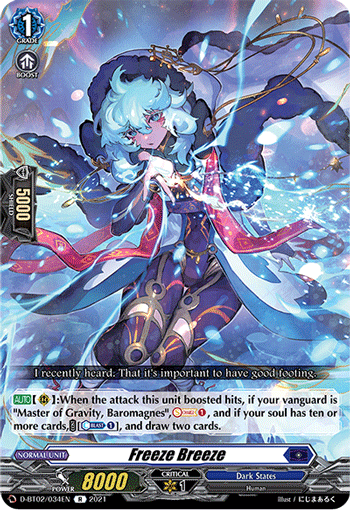
This ability helps to replenish the hand for Baromagnes players, and this is especially pertinent as many players find that their hand size is always low from guarding early aggression from the opponent and investing cards to build up their soul. For Freeze Breeze to work effectively, it is important to not use it to boost Baromagnes, especially if Baromagnes is already at 10 soul. This is because opponents will most likely guard the attack from Baromagnes well given that its attack is threatening an extra Critical. Calling Freeze Breeze to boost another attacking rear-guard may cause the opponent to let that attack go through if they need resources like Counter-Blast.
Using Freeze Breeze well may be a bit challenging, but it will definitely put Baromagnes players in a better position when used appropriately.
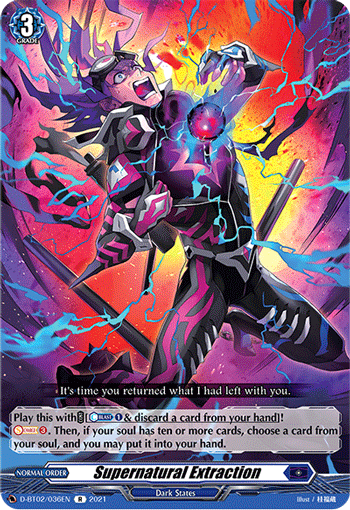
It’s very likely that this card will replace cards like Brothers’ Soul, although it must be noted that it can only be played when the player’s vanguard is at Grade 3.
On top of helping to increase the number of cards in soul to help Baromagnes attain the 15-Soul requirement, Supernatural Extraction allows the Baromagnes to obtain any key pieces that are in soul to be used. Missing a few more cards to hit the 15-Soul requirement? You could pick a Curtis or an Electro Spartan to reach that threshold. Need more defense? Grab a Perfect Guard or some triggers. What about attackers? You could choose to take a Deep Soniker! The flexibility that this Order gives is extremely invaluable for Baromagnes players.
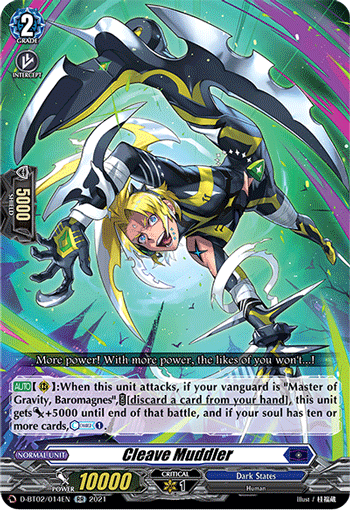
Cleave Muddler’s additional +5000 power gain will also be instrumental in attacking the opponent with higher numbers, and the Counter-Charge prevents Baromagnes from running out of Counter-Blast for its ability to be activated. Keeping its cost in mind, it’s recommended to play this card in conjunction with Selfish Engraver in the deck.

Support for Apex Ruler, Bastion
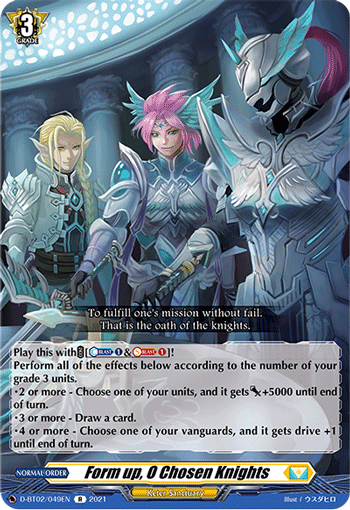
The aggression and card advantage that this card enables for Bastion decks is extremely significant. Not only does it increase the offensive power of attacking columns, it also adds more cards to the Bastion player’s hand. This card could help to sieve through the deck for more grade 3 units to call as attackers or boosters. Furthermore, there would be an even higher chance of drive checking triggers or grade 3 units when the vanguard attacks! Form Up, O Chosen Knights enables Bastion players to play extremely aggressively the moment Bastion enters the field.
Of course, this card requires Bastion players to play as many grade 3s as they possibly can on their grade 3 turn, but that shouldn’t be too much of a problem given that their deck is filled to the brim with grade 3 units. Form Up, O Chosen Knights will likely remain a staple in Bastion decks for quite some time, and Bastion players should definitely pick up a few copies of this card.
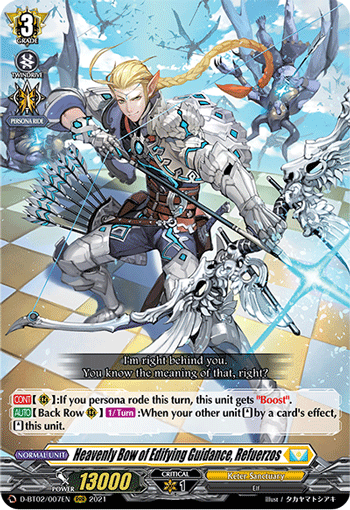
Refuerzos is another option to play in conjunction with the other card that confers Boost to rear-guards: Dark Strain Dragon. Refuerzos’ ability only becomes useful on Persona Ride turns, but it is quite cost-free, and it can be used as a booster twice due to its second ability. On the other hand, Dark Strain Dragon’s Boost effect can be given to other grade 3 rear-guards even during the first grade 3 turn, but it requires a hefty Soul-Blast 2 to activate, as well as three or more grade 3 units on the field.
It’s possible to play both of them at the same time by making use of Dark Strain’s ability to confer all grade 3 units Boost and Refuerzos’ second ability to restand itself when its boosted attacker restands from Bastion’s ability. These cards transform Bastion into a terrifying foe, especially during the first Grade 3 turn; as such Bastion players should definitely consider running this card to maximise the offensive output of the deck.
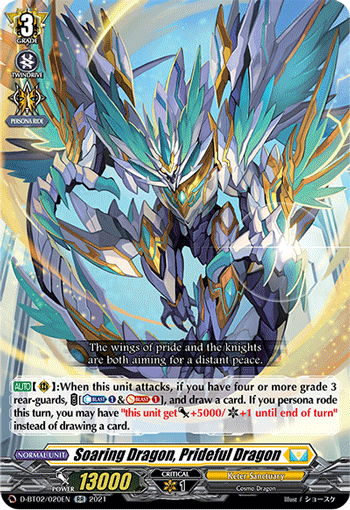
This card’s potential is clear as day during Persona Ride turns! Prideful Dragon can attack first for 28 000 power with 2 Critical. If Bastion’s second ability activates, the player can then restand Prideful Dragon to attack with 43 000 power AND 3 Critical. This isn’t even accounting for boosting units like Refuerzos and power buffs from Normal Orders! Of course, this would require a lot of resources in order to pull off.
As such, this card should be used as a finisher to end the game decisively. The offensive power that this card has is absolutely phenomenal, and Bastion players should definitely look into getting a few copies of this to dominate on the battlefield.
Support for Hexaorb Sorceress
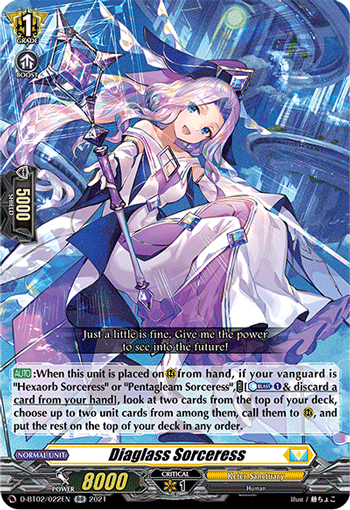
With this card, Hexaorb players will be able to look for more key pieces to add to their hand, call down powerful units early to form an impressive offense, and even stack triggers to drive check during the vanguard’s attack! Diaglass Sorceress enables threatening attacks that can cripple the opponent, even on Turn 2! No Hexaorb player should pass up the opportunity to play this card in their decks.
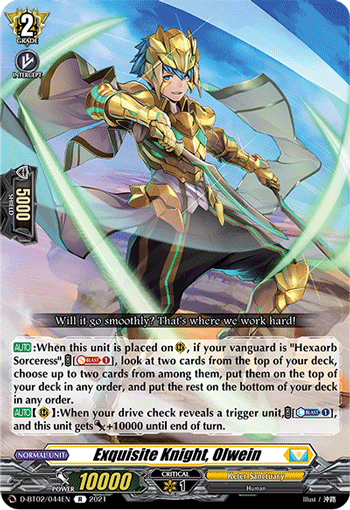
This ability greatly increases Hexaorb’s opportunities to filter through the deck for important triggers or key pieces. Diaglass Sorceress can also synergise with Olwein by calling it down from its ability before Olwein’s ability activates to filter through for triggers. The potential of Olwein with many other cards that filter through the deck is limitless.
Olwein’s second ability allows the player to pay 1 Counter-Blast to give it +10 000 power when a trigger is revealed by a drive check. This allows it to become an even more powerful attacker, on top of the trigger effect and Hexaorb’s first ability.
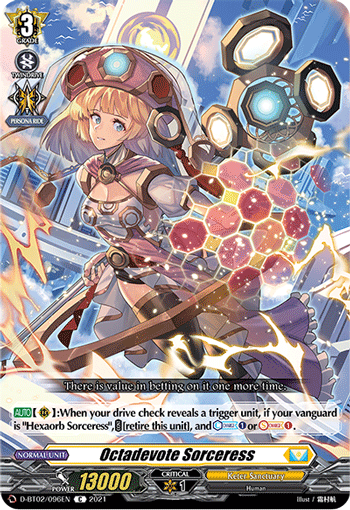
Octadevote Sorceress becomes an alternative resource generator to Fosado. Comparing the two cards, Fosado’s resource generation is only active to its attack hitting, but Octadevote’s resource generation can become active just by drive checking a trigger. Of course, Fosado will generate more resources than this card, but the opponent will frequently guard Fosado’s attack to prevent the resource generation. As such, Octadevote Sorceress would be a more reliable option for Hexaorb players to regain their resources.

Support for Sylvan Horned Beast King, Magnolia
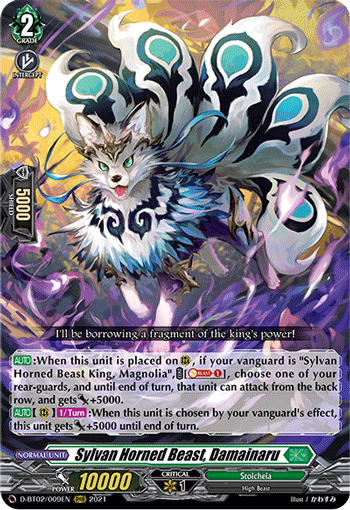
This ability is essential for Magnolia players to ramp up the pressure against other decks, especially when it goes into Turn 3. With Damainaru, Magnolia decks are now able to attack up to 5 times on the first Grade 3 ride! That’s an impressive amount of aggression that can definitely win games if the opponent’s defenses are lacking.
Damainaru’s second ability is just as powerful, as it gains +5000 power if it is chosen by the player’s vanguard effect (i.e. Magnolia’s ability) which allows it to be a strong attacker with 20 000 power. Magnolia players should definitely look into grabbing a full playset of this amazing card!
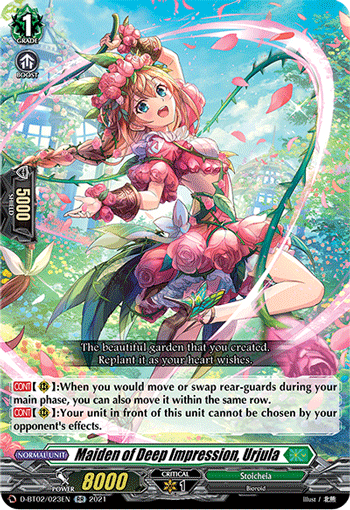
Urjula can also be used to bypass certain restrictions on cards, such as Sylvan Horned Beast, Koocy from the Festival Collection, which limits the player to calling it to the back row center rear-guard circle.
Urjula’s second ability is just as valuable, preventing the opponent from choosing units in front of this card for effects. Opponents will be forced to remove Urjula first before being able to affect the rear-guards in front of her. Urjula will have a lot of potential moving forward, as her ability is prized in a deck that relies on positioning of cards.
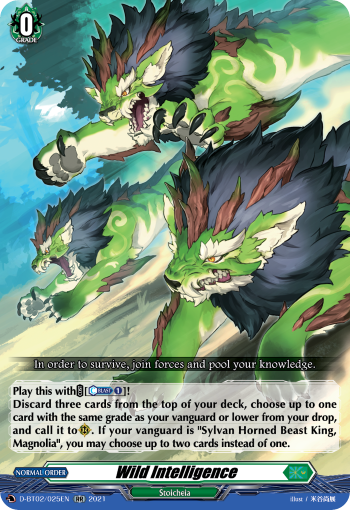
This card is amazing for Magnolia decks because it allows the player to filter the deck for some key pieces. Even if the player was unable to find anything useful from the discard, the player can still call out units that were retired earlier in the game back to a rear-guard circle, maintaining the pressure on the opponent!
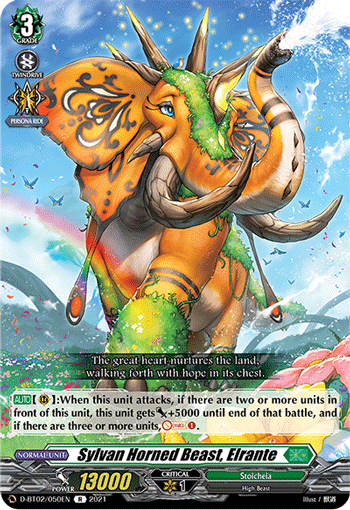
Elrante will be essential in replenishing soul for other cards in the Magnolia ride line, such as Damainaru and Lattice. Using Elrante will be tricky because the positioning of the card will become very important in order to fully maximise the card’s ability. With cards like Urjula, though, it becomes easier to reposition units to use Elrante better.
Support for Mysterious Rain Spiritualist, Zorga
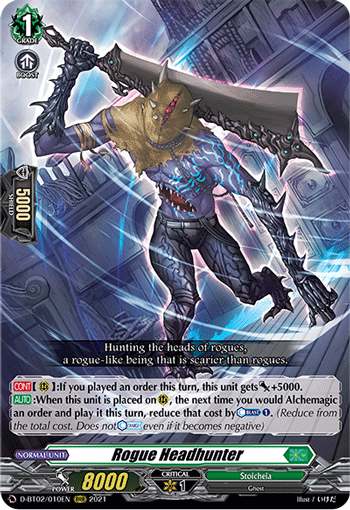
Orders like Grief, Despair, and Rejection and Regurgitation from the Underworld can be Alchemagic without worry of Counter-Blast deficiencies. Combining Headhunter with Hendrina would also allow most Normal Orders to be played without any cost at all. As such, Zorga players will never have to worry about any resource shortages to play their Orders anymore. Rogue Headhunter also gains +5000 power if an order was played this turn, so it can also serve as a good booster on offense.
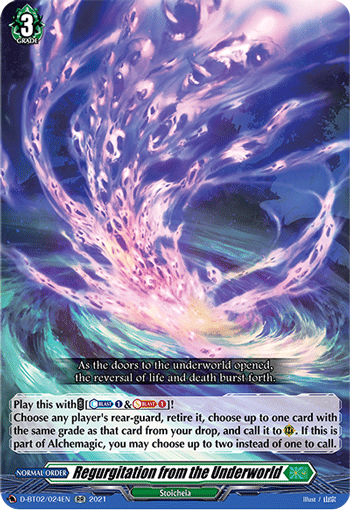
This card gives Zorga a form of field control to deal with pesky rear-guards on the opponent’s side of the field. This retire effect can also be used to remove a rear-guard on the Zorga player’s side of the field, to perhaps reuse a rear-guard for its on-place ability, like Admantis for example. Of course, the ability to revive more rear-guards onto the battlefield is extremely important for Zorga. This card is a must play for Zorga players if they want to build strong attacking columns.
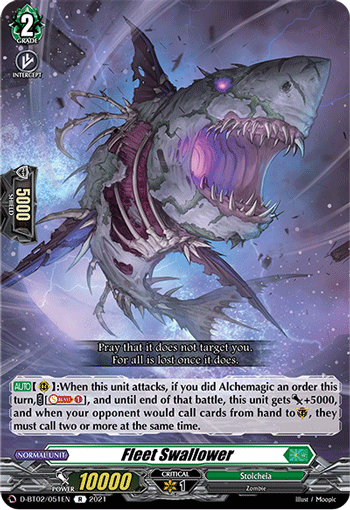
The guard restrict is especially powerful when it is combined with Normal Orders like Nectar of Sensationalism, which can give Fleet Swallower massive power and a Critical if there are 15 or more cards in the drop. Fleet Swallower will definitely see play in Zorga decks due to its ability to significantly reduce the amount of cards in the opponent’s hand, though it can be played sparingly so other supporting cards can be run.
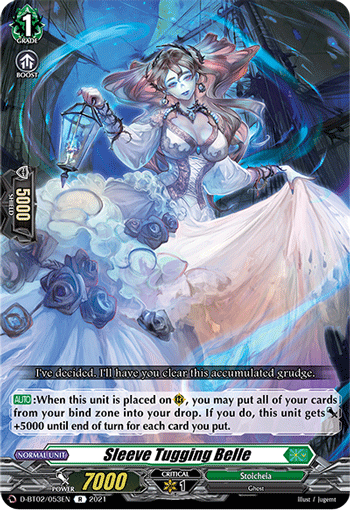
Sleeve Tugging Belle becomes a powerful attacker or booster if there are 2-3 cards in the bind zone, but more importantly this card helps to recycle Orders into the drop to be used again for Alchemagic. If Zorga players ever run out of Normal Orders in the drop to use, they can turn to this card to solve that problem. As such, Sleeve Tugging Belle will be an important card in Zorga decks for quite some time. Just like Fleet Swallower, this card can be run as a 1-2 of in the deck so that other key cards can be played!
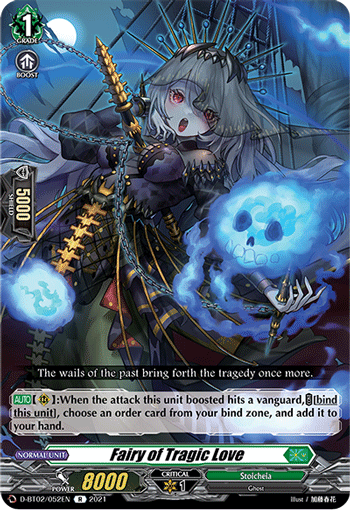
While this card’s ability only activates when the attack it boosted hits, it can still be an interesting option for players to add Orders back to their hand, especially if they do not have any Normal Orders for Alchemagic the following turn. Players should definitely consider using Fairy of Tragic Love in their decks for this reason!
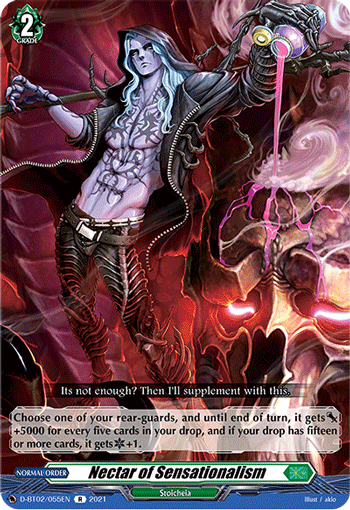
This card can be used in conjunction with Fleet Swallower to create a massive attacker that forces the opponent to use a lot of Shield to guard that attack, as Fleet Swallower forces the opponent to guard with two or more cards from their hand for its attack. The immense pressure that Nectar of Sensationalism gives the Zorga player’s attackers is something that is worth considering in deck-building!

Support for Aurora Battle Princess, Seraph Snow
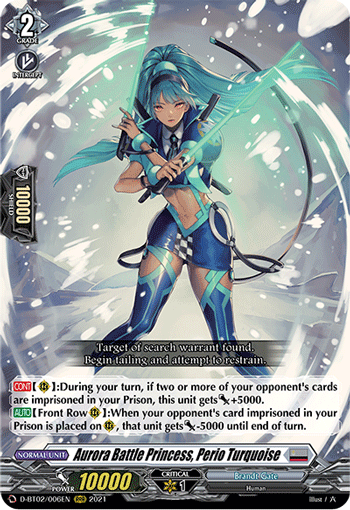
This can be especially detrimental to the opponent as they try to set up an offense. Their attacking columns will be significantly weaker due to Perio Turquoise’s ability, allowing Seraph Snow players to better deal with high-powered attacks. As such, the opponent may consider not even releasing their units in the Prison as those units would get in the way of their offensive strategy.
Perio Turquoise’s first ability allows it to become a strong attacker, as it gains +5000 power during the player’s turn if there are two or more of the opponent’s cards Imprisoned in the Prison. Overall, Perio Turquoise is a strong defensive card that has to be run as a 4-of in all Seraph Snow decks.
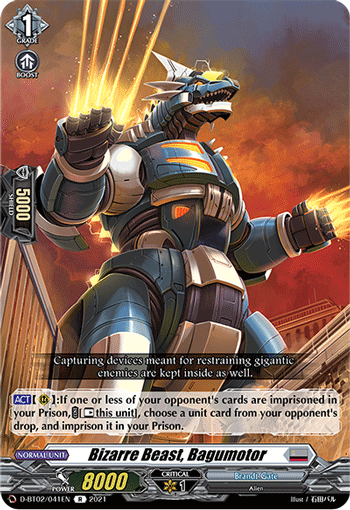
This helps in Imprisoning the opponent’s cards, even when they choose not to call any rear-guards onto the field; by extension, more abilities that require the opponent’s cards to be Imprisoned can be activated, like Seraph Snow and Grapple External. Bagumotor’s consistency in Imprisoning the opponent’s units is what makes it such an important card in the Seraph Snow deck.
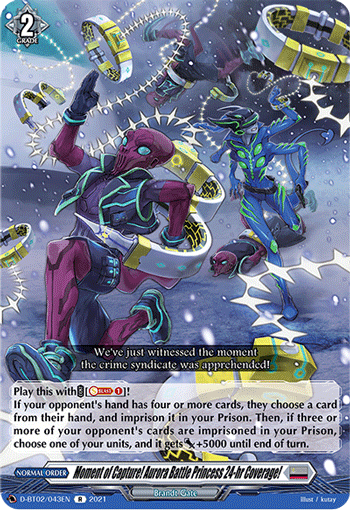
The hand Imprison ability of the card reduces the opponent’s hand size further, and opponents will be forced to Imprison their key units in order to keep defensive pieces in their hand to survive the turn.
Furthermore, this card helps to build to Seraph Snow’s 3-card requirement to give Seraph Snow’s +10 000 power buff and an extra Drive. The +5000 power gain that this card gives if there are three or more cards Imprisoned also helps to strengthen the attacking columns of the Seraph Snow player’s columns.

Derii Violet is an interesting defensive unit that can be used to block attacks from powerful cards that are grade 2 or less, like Lenard, Vairina Erger and Shadow Army tokens. Other than a matchup with Bastion (due to that deck running many Grade 3s), this card flourishes defensively against all other decks. Seraph Snow players can consider running this card as 1-2 of in the deck.
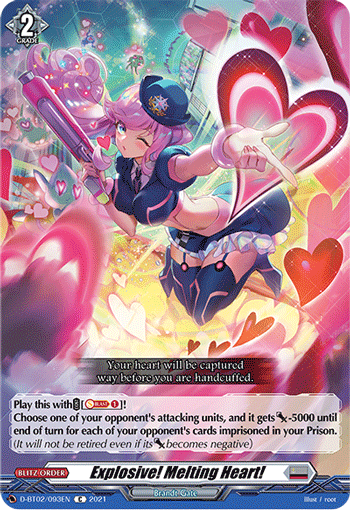
This ability can be especially powerful against decks that can restand their units, as it means that those units will remain at low Power throughout the turn unless the opponent finds a way to buff up their units again. However, this card is only effective if the opponent chooses to leave Imprisoned cards in the Prison. If the opponent removes all their cards from the Prison, this Blitz Order becomes more difficult to use. As such, it’s recommended to play this card sparingly, so that other complementary cards can be run alongside this!
Support for Cardinal Deus, Orfist

Thumborino is extremely powerful, especially when played during the early game in conjunction with the new Set Order Eclipsed Moonlight. Eclipsed Moonlight creates a Shadow Army token that Thumborino can boost, forming an oppressive attacking column of 38 000 power that can be achieved on Turn 2! Both cards can be removed from the field at the end of that battle, creating an empty column. This board clear effect is important to prevent the opponent from interacting with these cards. The card draw that Thumborino gives is also important to maintain card advantage for the Orfist player.
With all this in mind, Thumborino increases the aggression and draw power of Orfist, and it should be run as a 4-of to maximise its utility.
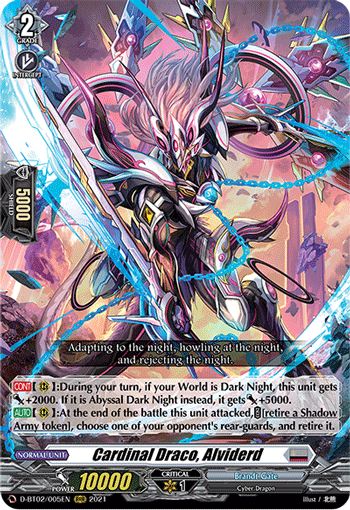
Alviderd’s second ability creates more utility from the Shadow Army tokens. At the end of the battle that Alviderd attacked, the player may retire a Shadow Army token to retire one of the opponent’s rear-guards. Orfist players will have a reliable field control tool that also helps to remove tokens from the board to prevent the opponent from interacting with them. Abilities like these will be especially beneficial against opponents who have units that rely on interacting with the player’s rear-guards to activate effects.
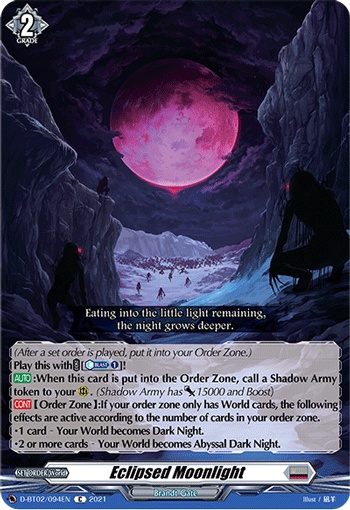
Eclipsed Moonlight can be played together with Thumborino to achieve great offense in the early game. This card can be searched out by Routis’ ability on the first turn. Then, the player can play this World to call a Shadow Army token. Combined with Thumborino, this forms a powerful attacking column on the second turn! This attacking column has a threatening 38 000 power, and the opponent will most definitely let this attack through. Orfist players will also draw a card and remove Thumborino and the Shadow Army token at the end of that battle!
Once Orfist is ridden, Eclipsed Moonlight isn’t as important as Orfist itself can generate Shadow Army tokens on its own. As such, this card should be played as a 1-2 of in the deck so that other cards that have more impact in the mid-game and late-game can be run.
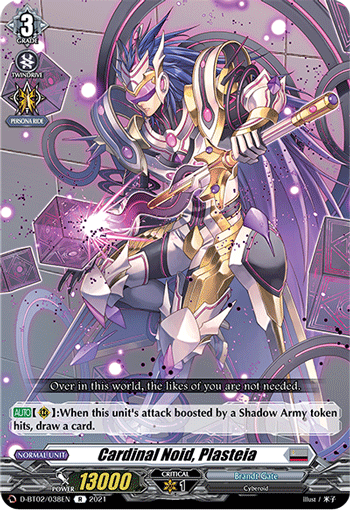
Plasteia’s ability is simple, yet effective. Players who need to increase their card advantage could consider using Plasteia to attack into an opponent’s rear-guard, which the opponent may not consider to guard. As such, Plasteia’s card draw effect will usually be triggered.
This card further highlights how Orfist is moving towards a playstyle that is centred around using the Shadow Army tokens to increase card advantage and game control. Plasteia is just one of the many cards that utilise the tokens for more purposes other than attacking and boosting.
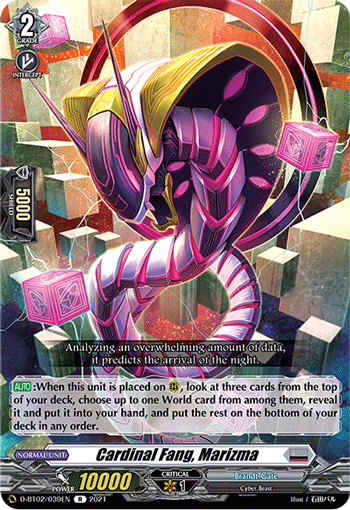
Marizma helps to filter out Worlds for Orfist players to play, as they try to attain Abyssal Dark Night. This could become more pertinent in builds that run less Worlds and more units. However, Marizma may take up more slots in the deck that could have been used to run more Worlds or key units, so this card may be run as a 1-2 of in the deck.
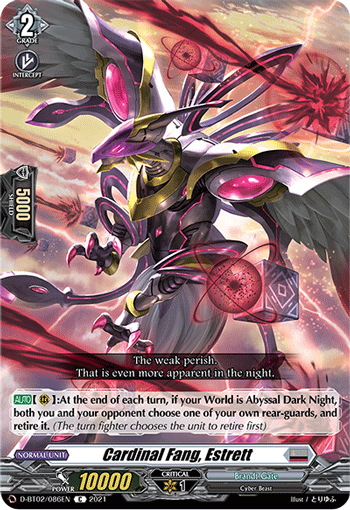
Estrett could be important in the deck as it is able to remove rear-guards from both player’s fields. Going into the opponent’s turn, the opponent will have one less rear-guard to work with for their offense, and they will also have fewer targets to attack into. This could be important against cards like Lenard, Magnolia, and Eugene. Going into the player’s turn, this will potentially mean that the opponent has weaker defenses (as they may be forced to retire a front-row grade 2), and the player will have an empty rear-guard circle to call other rear-guards. Estrett’s utility in field control will be something that Orfist players will consider, especially against rear-guard reliant decks.
Conclusion
D Booster Set 02: A Brush with the Legends is an amazing set release, increasing the consistency, aggression, utility and defense of many of the current ride lines. It also introduces two new ride lines in Dragonic Overlord and Phantom Blaster Dragon, adding a new dimension to playstyles for both Dragon Empire and Keter Sanctuary. These cards definitely increase the fun and excitement in the Standard format!
D Booster Set 02: A Brush with the Legends has already been released on 23 July 2021, so don’t forget to grab these cards!
